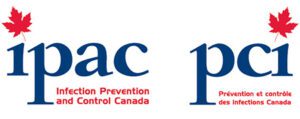Spring is on it’s way and so are mold allergies
Spring is on it’s way and so are mold allergies
You wouldn’t know it from the current weather we have here in southern Ontario but, believe it or not, Spring is on its way and so are mold allergies.
With Spring many individuals experience allergy symptoms. However, while most people attribute their runny noses and difficulty breathing to pollen, there might be another source of your allergy symptoms. Often, mold allergies are to blame. In the spring, mold allergies are particularly prevalent. Learn what causes them and how you can prevent them from ruining your spring season.
What Are Spring Mold Allergies?
When mold is present, it can cause your body to have some negative consequences. Because mold sends spores into the air, you can breathe in those spores. When you do, your body can fight back against them. This can cause issues like sneezing, wheezing, itchy throat, and other allergy symptoms. Mold allergies are quite common. However, everyone reacts differently to mold. Some have minor side effects, while others have more severe ones like difficulty breathing. Whether your mold allergies are minor or severe, they can have a drastic impact on your life.
In the spring, allergies to mold come out in full force. Mold is around all year. However, cold temperatures can keep mold at bay. Mold can’t grow outdoors in cold temperatures. Unless you have it in your home, then your allergies might not bother you. Even the air indoors is less conducive to mold growth. When you use your heater, the air dries out. This keeps mold at bay.
Then, the spring comes. With the change of the season come warmer temperatures. Those warmer temperatures mean that more mold can grow outside and in your home. As a result, your mold allergies could become a major issue.
How Do You Know You Have Them?
Pollen and mold allergies do have similar symptoms. For example, pollen allergy sufferers usually have stuffy noses, sneezing, and itchy eyes. In some cases, a mold allergy can have the same effects.
About 10% of the population suffers from an allergy to mold. Many people suffer from this type of allergy and don’t even realize it. Unfortunately, this means that they suffer from their symptoms without ever getting relief. It’s essential that you consider whether or not your allergies are caused by mold.
Determining whether you have mold allergies or other allergies isn’t as difficult as you might think. If you experience a worsening of symptoms after a rainstorm, then you might have a mold allergy. Often, the dampness causes mold to spread. With more mold spores in the air, your allergy symptoms worsen. Some of the common symptoms of mold allergy include the following:
- Postnasal drip
- Coughing
- Nasal congestion
If your allergies are from mold, then the symptoms may be worse in the evening. If you can’t seem to pinpoint what type of allergy you have, then you might have both. Some people are unfortunate enough to suffer from mold and pollen allergies. This can make the spring season particularly difficult.
Long-Term Effects
Depending on your age and health, there can be long-term effects of your mold allergies. Long-term exposure can lead to respiratory problems. Some people experience lack of concentration, a low sex drive, and lethargy. When these symptoms persist, there is a decreased quality of life.
If you suffer from a respiratory illness, then you could have more severe symptoms from mold exposure. The exposure could damage your respiratory system beyond repair. In young children and the elderly, the long-term effects of mold are also more serious.
Fighting Mold Allergies
If you can’t handle the constant sneezing, then you need help. Fortunately, there are ways to treat mold allergies. With allergy shots, you might be able to combat the symptoms. You need to talk to an allergist about treatment. If possible, he might administer shots before the spring. This could prevent you from experiencing your typical spring allergies.
If you want a reprieve from mold while you are home, then you can try keeping the windows open in the evening. At this time of day, the mold is less active. During the day, keep your windows closed. This can keep and mold and limit your allergy symptoms. In the summer, the rules are different. Keep in mind that this is only for springtime mold.
Another way to fight mold in the spring is to make sure that you reduce your humidifier. This removes moisture from your home’s air. As a result, it limits mold growth. You can keep mold from taking over your home and keep your allergies from getting in your way.
Spring Mold Prevention
If you want to fight your mold allergies, then you need to fight mold. In the spring, you should do your best to prevent mold growth. This means keeping moisture down to a minimum. Additionally, it also means looking out for any mold already growing in your home. If you see any signs of mold, then you should contact us. We safely remove the mold from your home and when the mold disappears, your allergies should disappear.


Maple Leaf Mold Inc. is a certified mold / asbestos removal and biological disinfection / air analysis company located in Toronto that uses certified IICRC technicians for all testing and remediation projects.
We are a professionally licensed firm experienced in testing, verifying and removing Mold / Asbestos / Lead and other environmental contaminants as well as providing disinfection services to control and kill biological contaminants.
Call 416-254-7256 to talk with us about your issue anytime.






